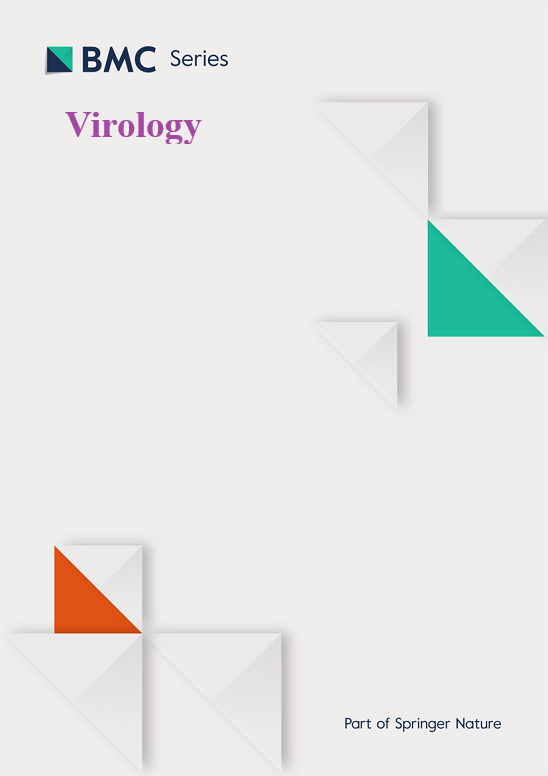Ross River virus genomes from Australia and the Pacific display coincidental and antagonistic codon usage patterns with common vertebrate hosts and a principal vector
IF 2.8
3区 医学
Q3 VIROLOGY
引用次数: 0
Abstract
Around 4500 Ross River virus (RRV) human cases are reported in Australia annually. To date, there is no registered nor licenced vaccine to protect against RRV disease. Identifying and substituting preferred with less-preferred codons and dinucleotides is a recognised strategy to attenuate viruses and may prove useful to vaccine development efforts for RRV and other related viruses. Here, we used bioinformatic approaches aimed at assessing evidence of codon usage and dinucleotide bias in 55 RRV whole genomes sampled from humans (Homo sapiens), macropods (Notomacropus agilis), and the Aedes vigilax mosquito. Our results indicate that RRV undergoes positive and negative codon usage bias with natural selection as the major force driving RRV codon usage patterns. RRV displays a bias towards codons with an A or C at the 3rd position while H. sapiens displays a G or C and N. agilis and Ae. vigilax both show bias towards codons with an A or U at the same 3rd position. RRVs codon usage patterns are coincidental to those displayed by common vertebrate hosts and antagonistic to patterns of Ae. vigilax. The coincidental bias identified suggests vertebrate host gene expression greatly influences RRV evolution. In addition, we show that the UG dinucleotides in RRV are overrepresented at all three codon sites, while CA dinucleotides are only overrepresented at codon sites 1–2 and 2–3. These over and under-representations can be exploited to develop attenuated RRV RNA vaccines. The approach utilised here could also be used to develop vaccines for other alphaviruses of global importance.

来自澳大利亚和太平洋的罗斯河病毒基因组与普通脊椎动物宿主和主要载体显示出一致和拮抗的密码子使用模式
澳大利亚每年报告的罗斯河病毒(RRV)人类病例约为4500例。迄今为止,没有注册或许可的疫苗来预防RRV疾病。鉴定优选密码子并用不太优选的密码子和二核苷酸取代优选密码子和二核苷酸是一种公认的减毒策略,可能对RRV和其他相关病毒的疫苗开发工作有用。在这里,我们使用生物信息学方法,旨在评估人类(智人)、大型足类动物(敏捷Notomacropus agilis)和伊蚊(Aedes vigilax) 55个RRV全基因组中密码子使用和二核苷酸偏倚的证据。我们的研究结果表明,RRV存在正、负密码子使用偏差,自然选择是驱动RRV密码子使用模式的主要力量。RRV偏爱第3位有a或C的密码子,而智人偏爱第3位有G或C的密码子,灵巧人偏爱第3位有n或C的密码子。vigilax对相同第三位的A或U密码子都有偏好。RRVs的密码子使用模式与普通脊椎动物宿主的密码子使用模式一致,而与伊蚊的密码子使用模式相反。vigilax。发现的巧合偏差表明脊椎动物宿主基因表达对RRV进化有很大影响。此外,我们还发现,在RRV中,UG二核苷酸在所有三个密码子位点都被过度表达,而CA二核苷酸仅在密码子位点1-2和2-3被过度表达。可以利用这些过度和不足的表征来开发减毒的RRV RNA疫苗。这里采用的方法也可用于开发其他具有全球重要性的甲病毒的疫苗。
本文章由计算机程序翻译,如有差异,请以英文原文为准。
求助全文
约1分钟内获得全文
求助全文
来源期刊

Virology
医学-病毒学
CiteScore
6.00
自引率
0.00%
发文量
157
审稿时长
50 days
期刊介绍:
Launched in 1955, Virology is a broad and inclusive journal that welcomes submissions on all aspects of virology including plant, animal, microbial and human viruses. The journal publishes basic research as well as pre-clinical and clinical studies of vaccines, anti-viral drugs and their development, anti-viral therapies, and computational studies of virus infections. Any submission that is of broad interest to the community of virologists/vaccinologists and reporting scientifically accurate and valuable research will be considered for publication, including negative findings and multidisciplinary work.Virology is open to reviews, research manuscripts, short communication, registered reports as well as follow-up manuscripts.
 求助内容:
求助内容: 应助结果提醒方式:
应助结果提醒方式:


